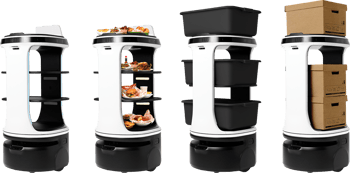Food waste is a major problem across the restaurant industry. According to the International Journal of Applied Management & Technology, restaurants are losing billions of dollars due to food waste every year.
Alongside labor, food is the top expense for most restaurants. Therefore, every morsel of food that ends up in a landfill is a dollar wasted.
7 Tips To Reduce Restaurant Food Waste
In an industry with notoriously tight margins, minimizing food waste must be a top priority. This is true both for the sake of reducing your carbon footprint and improving your restaurant’s overall profitability.
So what are actual restaurant operators doing to reduce food waste in restaurants?
We spoke with seven chefs and operators to gather the best restaurant food waste tips for you:
Patrick Balcom, chef-owner of Farow (Niwot, CO)
The biggest factor in food waste is proper ordering, to begin with. We stay away from ordering 'just in case' items – you either need it or you don’t. Another good way to decrease food waste is cross-utilization with a creative bar program. We find unique and creative ways to use varying parts of produce, from tinctures made from celery root tops to pomelo rinds infused in booze for a play on Limoncello.
Family meal is another great place to use excess food, and it feeds your staff. Lastly, a good composting program gets so much waste to local farms and ranches.
Dreux Ellis, executive chef of Cafe Gratitude (Los Angeles & San Diego, CA)
We compost all food scraps and utilize as many leftover ingredients from dishes as possible. When we make our in-house almond milk, the residual almonds are given to the pastry department to create almond flour. Unwanted vegetable parts, like kale stems and lettuce butts, are juiced and served in smoothies and fresh-pressed juices. And all bread scraps are saved to make croutons or breadcrumbs.
Michelle Carpenter, owner of Restaurant Beatrice and Zen Sushi (Dallas, TX)
The best way to be sustainable is to make as much as possible from scratch. It does take a little extra labor and time, but the food tastes better because it is made with more intention, and the carbon footprint is minimized because there’s less packaging, transport, and resources used.
Nearly every last item on our menu is scratch-made. We make all sausages and smoked meats, condiments like aioli, mayonnaise, mustard, hot sauce, and salad dressing, and also all doughs, breads, cakes, and jellies, jams, and pickles. All stocks are made using seafood shells and bones.
In the bar, we make our own citrus stock using a version of Kelsey Ramage's recipe, and we make our own tonic. We don't buy boxes or cans of processed items. The only thing we don't make in-house is ketchup, and that's because our chef hasn't had time – but we have a recipe.
Vincent Stipo, co-owner of Superfolie (Philadelphia, PA)
Try and use every bit of product you’re paying for. And there’s creativity that comes out of it. We work with local farmers to get whole ducks. A lot of people serve just duck breast. But we’re making stock from the carcass and saving the wings until we have enough for an appetizer. We also have duck prosciutto on our charcuterie board, and when we get to the end and can’t slice anymore, recently, we ground that up to create this crispy duck, bacon-bit-like topping that went atop of a warm endive salad. There’s always stuff like that you can do.
If you have multiple locations or menus, you can also utilize different parts of the same ingredient across menus. Right now, we have four menus, plus special event menus, and with all of those, we’re constantly figuring out how we can reinvent ingredients to avoid staleness but also to make sure we’re using everything efficiently. For example, we have a roasted broccoli tartine on Superfolie’s menu, and we put the broccoli filling into puff pastry to make a fritter for a cocktail event.
Andy Doubrava and Tiffani Ortiz, co-founders of Slow Burn (multiple locations)
Our biggest piece of advice is to reach out to your community. A lot of pieces to the puzzle are right at your doorstep.
A local farm or community garden will take your compost. If you’re not already composting, more than likely a neighbor already is, and if your town doesn’t provide composting service, a communal request is more powerful than an individual.
Clint Hughey, director of impact at Snooze A.M. Eatery (multiple locations)
We do our best to cross-utilize ingredients on at least two menu items. For example, we have the Parmesan-panko crab cake Benedict and the crab asparagus omelet.
We also monitor inventory levels daily and leverage that with sales data to build our prep list. For prepped items, we like to have full and half batches so that we can reduce being long on product.
For our LTOs [limited period of time items], we work closely with suppliers to avoid having leftover product when coming close to the end of that offering. Also, when utilizing new samples in our test kitchen, we often donate much of the remaining product to local food banks.
And when we have end-of-shift leftover items, we work to find a way to utilize that product in other ways – remaining cooked bacon in house-made bacon jam, for example.
Tim Payne, executive chef and director of food and garden at Cowhorn Vineyard & Garden (Jacksonville, OR)
It is far better to set an ordering strategy that encompasses several small orders, meeting daily volumes, than a few large orders. This method allows for better storage and quicker product rotation.
It is easier to purchase in large bulk pack sizes, but how much is left unused before it goes bad? It may be cheaper per pound for the large package size, but once you factor in the waste, the cost difference is negligible.
Improper storage is a big contributor to food waste. Potatoes and onions need to be stored out of sunlight and ideally not in hot or humid conditions. Vegetables need to be stored in a way where moisture can escape–not in a bag or wrapped up, causing moisture and decomposition. Also, do a fridge check frequently. Question what you need to use first, and plan menus accordingly. Being flexible will help immensely in waste minimization.
Reduce Food Waste in Restaurants with Streamlined Inventory Management
As these expert tips suggest, the best way to reduce food waste in restaurants is through a combination of creativity and improved inventory management. The restaurant operators and chefs that we spoke to emphasized the importance of coordinating food orders with the actual usage and shelf-life of your ingredients.
This type of coordination can be difficult to achieve without the right tools. Fortunately, our industry now has access to an increasingly sophisticated array of restaurant technology platforms, including those that can help simplify and streamline inventory management. Check out these industry-leading Inventory Management solutions to learn more.
Additional reporting by Grace Dickinson.





